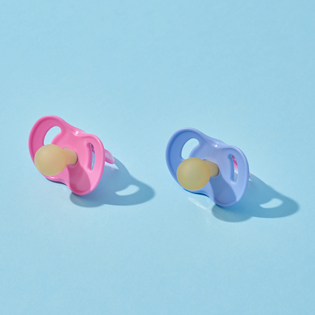What’s one of the most vulnerable spots on your toddler’s sweet face? Her nose. After all, that little button sticks out farther than her other features, making it the prime impact point for inevitable stumbles and other mishaps.
If your toddler took a tumble that included a hit to the nose, you’re not alone. Nose injuries rank pretty high on the list of common childhood boo-boos, just below head bumps and split lips.
That’s because your tot is moving fast, isn’t steady on her feet yet (toddlers are notoriously clumsy), and is still a rookie at judging distances (oops — there’s the wall!). It also doesn’t help that a toddler's nose is filled with tiny blood vessels, so even the smallest bump can produce a seemingly enormous amount of blood.
What’s the best way to handle a blow to the nose? Stay calm — and then treat the nose injury right away. Here’s what you should know.
Types of nose injuries in toddlers
A bonk on the nose can lead to a number of different injuries. Here are a few common nose injuries in toddlers to watch out for:[1]
Nosebleed. A nosebleed is caused by broken blood vessels in the nasal mucus membranes. With young children, a nosebleed can be brought on by anything from a hit to the nose (either in a fall or a collision with an object) to nose-picking. Either way, nosebleeds can be scary, but usually aren’t serious.[2]
Swollen nose. A smack to the nose can cause swelling and bruising. Often, swelling can make a parent concerned about a broken bone, but swelling without a fracture or a “broken nose” is pretty common.
Nasal fracture. A nasal fracture is a broken nose. These occur when the force of a hit to the nose is strong enough to cause a crack or break in the cartilage or bone. A broken nose may look crooked or bent. This type of injury must be reset before it heals (within two weeks) or it will heal crooked.[3]
Read This Next
Nasal septal hematoma (NSH). This is a blood clot that can occur in the wall of the nose after a trauma to the area. NSH is rare, but it can be serious. If left untreated, NSH can block the blood supply to the cartilage, or lead to infection, both of which can destroy the cartilage in the nose.[4] Symptoms include pain, nasal congestion and possibly fever. Reach out to your pediatrician right away if your child experiences difficulty breathing from one or both sides of the nose, a persistent runny nose, worsening pain, or fever after a nose injury.[5]
Tips for treating your toddler’s nose injury at home
In most cases, you’ll be able to heal your toddler’s injured nose at home. Follow these steps.
- If needed, staunch your toddler’s nosebleed by having her sit upright and lean forward slightly while you pinch the soft parts of her nose so the nostrils are closed. Hold this position for about five minutes without letting go and the bleeding should subside. Afterwards, clean the area with soap and water, so you can see her nose more clearly and confirm that it doesn’t look otherwise injured.
- If you notice bruising or swelling, apply an ice pack, since the cold can minimize pain and puffiness. Cover the pack (or bag of frozen veggies) with a washcloth so the ice doesn’t directly touch her skin, and press it gently on the area for 20 minutes. Can’t get your wiggle worm to sit still for that long? Turn on her favorite show or movie, or give her an ice pop to suck on while you ice her nose.
- Give your toddler some children’s ibuprofen if she’s in pain. This can also help bring the swelling down.
Finally, if you do see swelling, you don’t have to assume the worst. In most cases, swelling will go down within four or five days.
While swelling can obscure a fracture, further treatment isn’t usually necessary right away, even if there is a fracture. In fact, X-rays aren’t usually taken because the nose is mainly cartilage — and most docs don’t even repair a broken nose for at least five days because they want the swelling to go down first.
When to call the doctor for a nose injury
There are nose injuries that you’ll want to talk to your pediatrician about. Call your doctor right away if:
- Your tot took a tough tumble and you’re concerned. When in doubt, it’s never a bad idea to call your pediatrician for advice.
- The blow was to your toddler’s whole head and was more than a light bump, even if your child didn’t lose consciousness.
- Your child still complains of pain after the swelling subsides.
When to go to urgent care or the ER for a toddler nose injury
In rare instances, a nose injury can be an emergency. Signs you should head to the urgent care or ER include:
- If the shape of that little nose has changed after swelling subsides. That’s especially true if your child’s nose looks crooked or bent, which can be a sign of a fracture.
- If the swelling doesn’t go away, seems like it’s getting worse, or is causing nasal congestion, fever, difficulty breathing from the nose, or a persistent runny nose, go to the ER, as these could be signs of NSH.
- If your child loses consciousness, call 911.
Toddler nose injuries usually fall under the “unavoidable accidents” category, so don’t beat yourself up if your tot bumps her nose. All you can do is be prepared to help her heal — and remain vigilant about childproofing.











































 Trending On What to Expect
Trending On What to Expect





